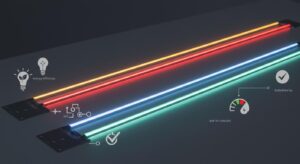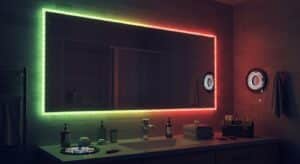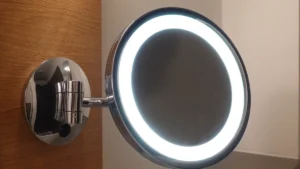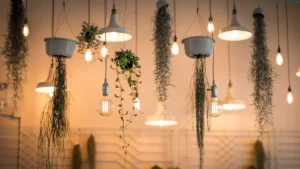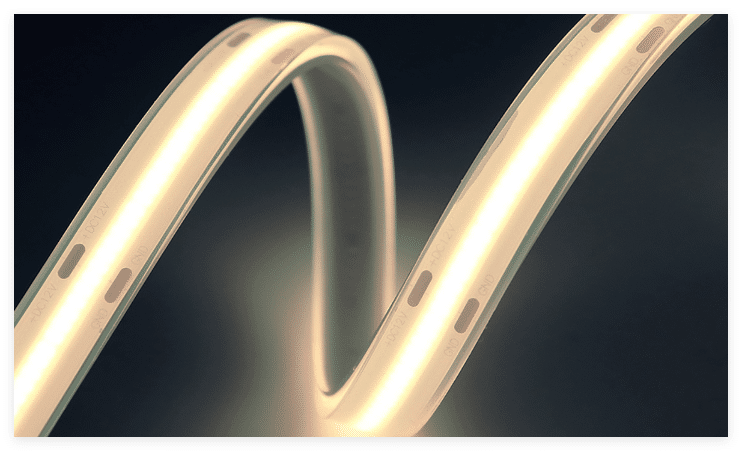
Choosing 12 volt LED lights can change energy use and brightness. These lights are very flexible and work well in homes, cars, and outside spaces. They save a lot of energy, using 75% less than old bulbs. They also last 25 times longer than incandescent bulbs. Using LED lights helps the planet by saving energy. By 2035, the savings could match the power from 92 plants. Which 12 volt LED light is best for you? Let’s find out.
Key Takeaways
12-volt LED lights use 75% less energy than old bulbs. They are better for the environment.
These lights work 25 times longer than regular bulbs. This saves money and time on replacements.
Brightness is shown in lumens. Pick higher lumens for focused tasks.
Wattage shows energy use. Low wattage is good for decoration. High wattage works well for bright spaces.
Check if your power supply matches the lights. This stops dimming or damage.
Overview of 12 Volt LED Lights
What Are 12 Volt LED Lights?
12-volt LED lights are lights that save energy. They run on a 12-volt power source. These lights use LEDs, which are small and bright. They use much less energy than old-style bulbs like halogen or incandescent ones. Their small size and low power make them safe and useful in many places.
The brightness of these lights is measured in lumens. For instance, LED strips can give 450 lumens per foot (or 1500 lumens per metre). How bright they are depends on the number of LEDs, how efficient they are, and how much power they use. The voltage of these lights is set by how the LEDs are arranged. Most LEDs use 3 volts, and when joined together, their voltages add up to meet the 12-volt need.
Common Applications of 12 Volt LED Lights
12-volt LED lights are used in homes, businesses, and factories. They are great for both decoration and practical lighting. Here are some common uses:
Application Type | Setting Type |
|---|---|
Decorative Lighting | Homes |
Under Cabinet Lighting | Homes |
Recessed Lighting | Homes |
Garden & Outdoor Lighting | Homes |
Pathway Lighting | Homes |
Spot & Flood Lighting | Homes |
Pool Lighting | Homes |
Indoor Lighting for Shops | Businesses |
Street Lighting | Businesses |
Warehouse Lighting | Businesses |
Large Christmas Trees | Businesses |
At home, you might use these lights under kitchen cabinets or along garden paths. In shops or offices, they are used for bright warehouse lighting or streetlights. They last long and save money, making them a smart choice for everyone.
Key Factors to Compare
Brightness (Measured in Lumens)
When picking 12 volt LED lights, brightness is key. Brightness shows how much light a bulb gives off. It is measured in lumens. More lumens mean brighter light. For example, a 12 volt LED strip gives about 450 lumens per foot. This makes it great for tasks needing focused or decorative lighting.
How bright a light is depends on a few things. These include the number of LEDs, their efficiency, and the power they get. Think about the type of lighting you need too. Spotlights need more lumens to light up specific areas well. But for softer lighting, fewer lumens work better.
Energy Efficiency and Wattage
Energy efficiency is very important when choosing LED lights. LEDs use less energy but give more light than old bulbs. Efficiency is measured in lumens per watt (lm/W). The best LEDs can reach 220 lm/W. Good-quality LEDs are usually between 100 and 149 lm/W. This means you get bright light without high energy costs.
To save energy, match the wattage to your needs. Low wattage lights are good for decoration. High wattage lights are better for bright areas. The power supply also matters. For longer runs, 24V systems are more efficient. But 12V systems are easier for short runs and detailed work.
Performance Category | Luminous Efficacy (lm/W) |
|---|---|
Top performance LED | 220 lm/W |
High Performance LED | 150-200 lm/W |
Good Performance LED | 100-149 lm/W |
Low Performance LED | 50-99 lm/W |
Lifespan and Durability
12 volt LED lights last much longer than old bulbs. They can last 25 times longer, so you replace them less often. This makes them a smart and cost-saving choice for homes and businesses.
LEDs are also very strong. Good-quality LEDs are tested to meet safety and performance rules. Certifications like VDE, BS, and CB prove they are reliable. These tests check for safety, strength, and energy use. Certified LEDs are built to last and work well over time.
VDE Certification: Follows European safety and quality rules.
BS Certification: Proves energy efficiency and strength by British Standards.
CB Certification: Meets global safety and performance rules.
By thinking about these points, you can pick 12 volt LED lights that are bright, efficient, and long-lasting for your needs.
Types of 12 Volt LED Lights
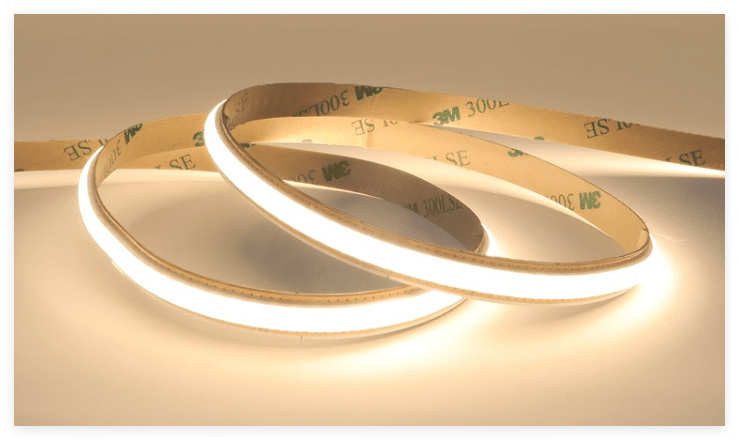
When picking 12 volt LED lights, knowing the types helps. Each type has its own use, offering different brightness, beam angles, and energy savings. Let’s look at three common types: spotlights, floodlights, and 12v LED strip lights.
Spotlights
Spotlights give strong, focused light. Their beam is narrow, usually 15–45 degrees. They are great for lighting up artwork, paths, or outdoor areas.
Spotlights shine bright with accuracy. For example, a 12 volt LED spotlight from brands like LEDMO or Nilight can give 300–1200 lumens. The table below shows some spotlight choices:
Brand | Wattage | Lumens | Beam Angle |
|---|---|---|---|
LEDMO | 3W | 300 lm | 60 degrees |
Kohree | 6W | 600 lm | 120 degrees |
Yitamotor | 7W | 700 lm | 60 degrees |
Nilight | 9W | 900 lm | 30 degrees |
Super Bright LEDS | 12W | 1200 lm | 60 degrees |
Spotlights are often placed high for better focus. Features like surge protection and wireless control make them reliable outdoors.
Tip: Check the beam angle and lumens to match your needs.
Floodlights
Floodlights light up big spaces evenly. Unlike spotlights, they have wide beams, usually 120–160 degrees. They work well in gardens, driveways, or sports fields.
Floodlights are very bright. Wired ones can give 3,000–20,000 lumens. Solar ones usually range from 500–3,000 lumens. The table below compares wired and solar floodlights:
Metric | Wired LED Floodlights | Solar LED Floodlights |
|---|---|---|
Luminous Output (Lumens) | 3,000 to over 20,000 lumens | 500 to 3,000 lumens |
Illuminance (Lux) | 20–50 lux over large areas | Lower and more localised illuminance |
Colour Temperature (CCT) | 5000K–6000K (Cool White) | Limited CCT options, lower CRI (70–80) |
Beam Distribution | Customisable optics for precision | Simple wide-angle lenses (120°–160°) |
Thermal Stability | Robust heat sinks, stable output | Limited heat dissipation, potential throttling |
Floodlights often have features like custom optics and heat sinks for steady performance.
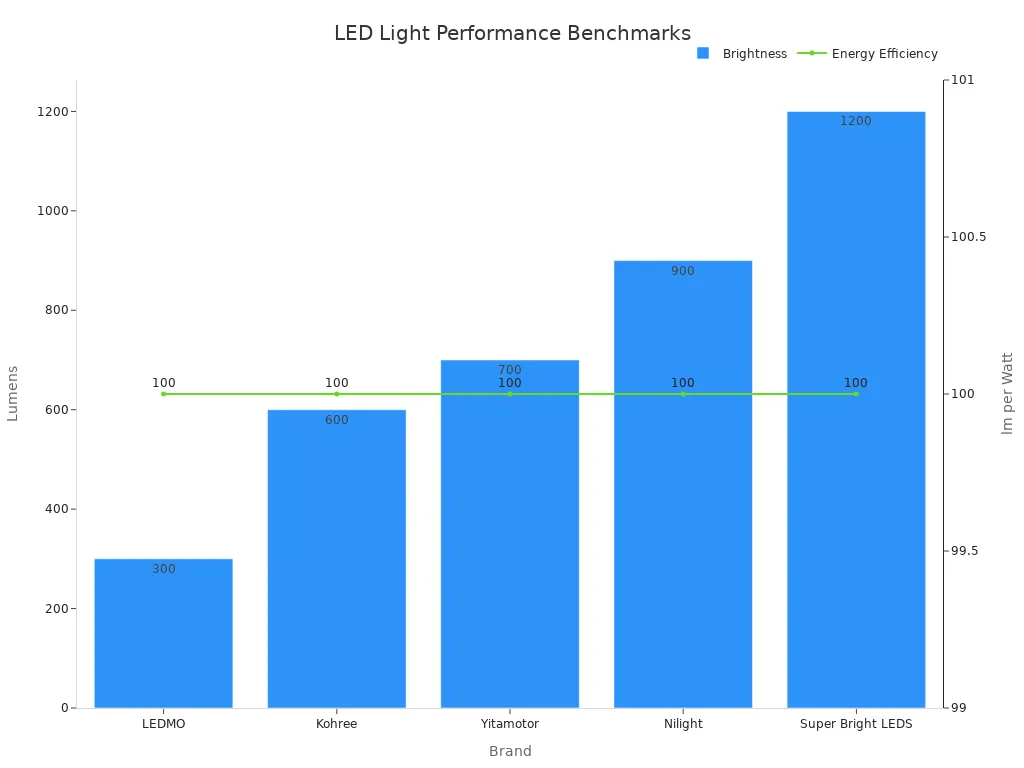
Note: Wired floodlights are better for outdoor use due to their brightness and stability.
12v LED Strip Lights
12v LED strip lights are flexible and simple to set up. They have small LEDs on a bendable board, letting you adjust their size and shape.
Use them for under-cabinet lighting, accents, or TV backlighting. They give about 450 lumens per foot, which is enough for most uses. Follow these steps to install them:
Test brightness and colour by holding the strip in place.
Turn off the power supply and LEDs.
Cut the strip to the needed length at marked spots.
Match polarity when joining pieces.
Clean the surface where the strip will stick.
Remove the adhesive backing and press the strip down.
Connect wires to the power supply, dimmers, or controllers.
Turn on the lights to check the setup.
12v LED strip lights save energy and work well with low voltage systems. They are great for homes and businesses.
Tip: Clean the surface properly to make sure the strip sticks well.
MR8, MR11, and MR16 Reflector Lamps
MR8, MR11, and MR16 lamps are small and useful lights. They give focused light, making them great for tasks, accents, or decoration. You can use them at home, in offices, or in shops.
What Are MR Reflector Lamps?
“MR” means “Multifaceted Reflector”. These lamps have a shiny inside surface. This surface directs light into a specific beam. The numbers (8, 11, and 16) show the lamp’s width in eighths of an inch. For example, an MR16 lamp is 16/8 inches, or 2 inches, wide.
Each type of MR lamp has its own features:
MR8: This is the smallest lamp. It fits in tiny spaces like display cases.
MR11: A bit bigger, MR11 lamps are used for accent lighting in homes or shops.
MR16: The most common size, MR16 lamps are very flexible. Use them for spotlights, recessed lights, or track lights.
Benefits of MR Reflector Lamps
MR lamps have many advantages over older bulbs. Here’s why they are a good choice:
Energy Efficiency: They use less power but still give bright light. This makes them great for saving energy.
Compact Design: Their small size fits in places where big bulbs can’t.
Dimmable Options: Many MR lamps can dim, letting you control brightness. This is useful for setting moods or saving energy.
Directional Lighting: The reflector focuses light exactly where needed, wasting less.
Long Lifespan: Like other LEDs, MR lamps last much longer than old bulbs. This saves money on replacements.
Comparing MR8, MR11, and MR16 Lamps
Here’s a table showing the differences between these lamps:
Feature | MR8 | MR11 | MR16 |
|---|---|---|---|
Diameter | 1 inch (25 mm) | 1.375 inches (35 mm) | 2 inches (50 mm) |
Typical Wattage | 2–5 watts | 3–7 watts | 5–10 watts |
Luminous Output | 150–300 lumens | 200–400 lumens | 300–800 lumens |
Beam Angle | Narrow (15–30°) | Medium (20–40°) | Wide (25–60°) |
Common Applications | Display cases | Accent lighting | Spotlights, recessed lighting |
Practical Applications
You can use MR lamps in many places. Here are some ideas:
Home Lighting: Use MR16 lamps for recessed lights in kitchens or living rooms. MR11 lamps are great for lighting up art or special features.
Retail Displays: MR8 lamps are perfect for lighting jewellery or small items in cases.
Outdoor Lighting: Weatherproof MR16 lamps work well for garden lights or pathways.
Tip: Check if the lamp fits your fixture and power supply. Make sure it’s right for indoor or outdoor use.
MR8, MR11, and MR16 lamps are efficient, flexible, and stylish. Whether for tasks or accents, they are a dependable lighting choice.
Practical Use Cases
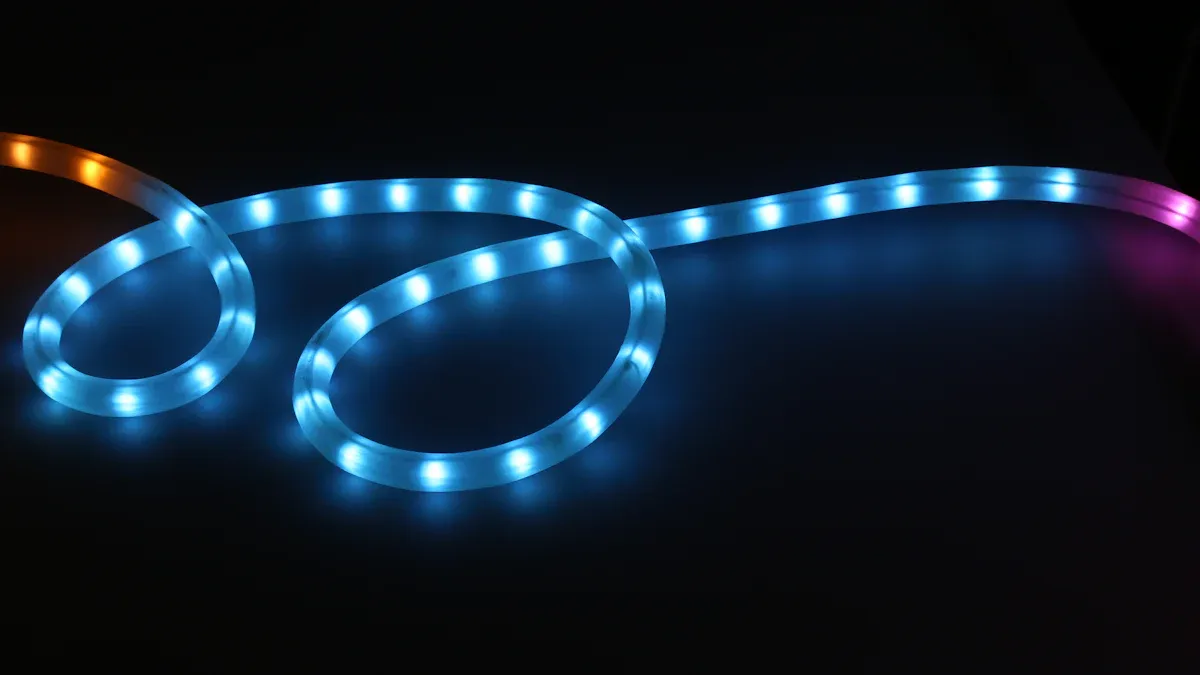
Home Lighting
12 volt LED lights are great for lighting homes. Use them under kitchen cabinets, in living room ceilings, or to highlight art. They save energy, lowering electricity bills. Their long life means fewer replacements. These lights also stay cool, making them safe for tight spaces.
Smart lighting systems show how useful LEDs are at home. For example, automatic systems can change brightness based on time or room use. This creates a cosy and energy-saving space. Whether you need bright task lighting or soft decorative lighting, LEDs are dependable and adjustable.
Tip: Pick dimmable LEDs to set the right brightness for any room.
RV and Caravan Lighting
Good lighting is important in RVs and caravans. 12 volt LED lights work well here because they save energy and last long. They use 80–90% less power than old bulbs, helping save battery life on trips. They last 25,000 to 50,000 hours, so they’re reliable for many journeys.
LEDs make less heat, which is safer for small RV spaces. They are also eco-friendly as they don’t have harmful materials and can be recycled. People say these lights are great for cooking, reading, and relaxing in RVs.
Benefits: LEDs save energy, last longer, and stay cool, making them ideal for RVs.
Outdoor and Garden Lighting
Outdoor areas benefit a lot from 12 volt LED lights. They light up gardens, paths, and driveways while using up to 85% less energy than older lights. They last 40,000 to 60,000 hours, meaning fewer replacements and less upkeep.
Comparing LEDs to tungsten halogen lamps shows why LEDs are better for outdoors. LEDs stay cooler, work with more voltage ranges, and need fewer replacements, even if they cost more at first. Their efficiency and strength make them perfect for outdoor lighting.
Feature | 12 Volt LED Lights | Tungsten Halogen Lamps |
|---|---|---|
Energy Efficiency | Uses up to 85% less energy | Better than old bulbs, but still hot |
Longevity | Lasts 40,000 to 60,000 hours | Lasts 2,000 to 10,000 hours |
Heat Production | Stays much cooler | Gets very hot |
Voltage Range | Works with 8V to 15V | Works with 10V to 12V |
Initial Investment | Costs more upfront, lasts longer | Costs less upfront, needs replacing |
Note: For big outdoor spaces, wired LED floodlights give better brightness and stability.
Automotive and Marine Applications
12-volt LED lights are great for cars and boats. They give bright light while using very little power. These LEDs are flexible and work well for many uses, like improving car interiors or lighting up boat decks.
Benefits of 12-Volt LEDs in Vehicles 🚗
12-volt LED lights are useful for cars, trucks, and motorbikes. Here’s why they’re a smart choice:
Energy Efficiency: They use less power, helping your battery last longer.
Durability: They handle bumps and shakes, perfect for rough roads.
Customisation: Pick colours and designs to make your vehicle unique.
You can use them for:
Headlights and Fog Lights: Bright beams improve visibility on the road.
室内照明: Light up dashboards, footwells, or ceilings softly.
Accent Lighting: Add style with LED strips under seats or doors.
Marine Applications
Boats and yachts benefit a lot from 12-volt LED lights. They use little power, which is great for battery systems. They also survive tough conditions like saltwater and humidity.
Common uses on boats include:
Navigation Lights: Mark your boat’s position for safety.
Deck Lighting: Light up work areas or create a calm mood.
Underwater Lights: Make your boat look amazing at night.
Feature | Automotive LEDs | Marine LEDs |
|---|---|---|
Power Consumption | Low | Low |
Resistance to Vibration | High | Moderate |
Water Resistance | Moderate | High |
Tip: Look for waterproof ratings like IP67 or IP68 for marine LEDs.
Switching to 12-volt LED lights improves safety, saves energy, and adds style. Their strength and efficiency make them a great choice for cars and boats.
Tips for Picking the Right Light
Matching with Power Supply
Make sure your 12-volt LED light matches the power supply. This helps it work well. LEDs need steady voltage to shine properly. If the voltage is too low, the lights may not turn on. For example, 12-volt LED strips need at least 7.5 volts to light up. Using less voltage can make them last longer but dimmer. On the other hand, higher voltage uses more power. For every 0.75-volt increase, power use goes up by 1 watt per foot.
To avoid problems, check the details of your LED lights and power supply. Some brands, like M4 Products, give helpful advice about compatibility. They focus on quality and customer needs, making them a good choice.
Tip: Use a steady power supply to keep voltage stable and protect your LEDs.
Voltage Drop Problems
Voltage drop happens when the power source is far from the LEDs. This can make the lights dim or even damage them. It often occurs if cables are too thin or connections are loose. Dimming lights are a sign of voltage drop.
To reduce voltage drop:
Use thicker cables for long distances.
Make sure connections are tight and clean.
Add voltage regulators to keep power steady.
Voltage drop can also be unsafe. Too much drop can overheat parts, which might cause a fire. Keeping the right voltage is important for safety and proper use.
Note: Check your wiring and power setup often to avoid voltage drop.
Installation and Care Tips
Installing and caring for your 12-volt LED lights properly helps them last longer. Always read the manual for instructions. Good-quality LEDs work better and last longer, so pick trusted brands.
For care:
Clean the lights often to remove dust.
Look for loose wires or broken parts regularly.
Keep LEDs away from heat and damp areas to avoid damage.
Tip: Regular cleaning and checks help your LEDs work safely and efficiently.
By following these steps, your 12-volt LED lights will stay bright and last many years.
Now you know how 12 volt LED lights work. They save energy, last long, and can be used in many ways. Spotlights, floodlights, and LED strip lights each have special uses, so you can pick what suits you best.
Think about what you need before buying. Check the brightness, energy use, and if they match your power supply. For outside, choose weatherproof lights. For inside, dimmable lights let you adjust brightness. Always read the details to avoid problems like voltage drop.
Tip: Take care of your lights to keep them working well.
By looking at both technical details and practical needs, you can find the best LED lights for your space.
FAQ
What is the difference between 12-volt and 24-volt LED lights?
12-volt LEDs are good for short distances and small areas. 24-volt LEDs work better for longer distances and bigger spaces. Pick based on your power source and where you’ll use them.
Can you dim 12-volt LED lights?
Yes, many 12-volt LEDs can dim. Use the right dimmers and controllers to change brightness. Check the product details to make sure they support dimming.
How do you prevent voltage drop in 12-volt LED systems?
Use thicker wires for long distances to avoid voltage drop. Make sure all connections are tight and clean. Add voltage regulators to keep power steady. Check the wiring often to ensure everything works well.
Are 12-volt LED lights safe for outdoor use?
Yes, many 12-volt LEDs are made for outdoor use. Look for IP ratings like IP67 or IP68 to ensure they resist water and dust. These ratings show they are safe for outside.
How long do 12-volt LED lights last?
Good-quality 12-volt LEDs can last 25,000 to 50,000 hours. Installing them properly and taking care of them helps them last longer. Clean them often and keep them cool to avoid damage.
See Also
Evaluating LED Strips With High Brightness For Various Uses
Assessing 5V Versus 12V LED Strips For Your Project
In-Depth Comparison Of SMD 2835, 5050, And 3528 Strips
